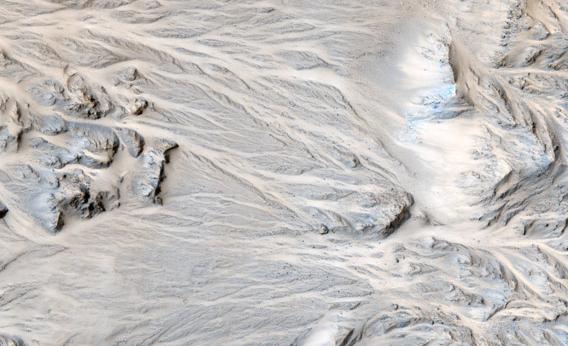Create a free profile to get unlimited access to exclusive videos, sweepstakes, and more!
I Heard It Rains Down in Mars

There are a lot of features on Mars that look similar to those on Earth. It has mountains, volcanoes, ice caps, sand dunes, and more.
One of the more intriguing Martian features are alluvial fans: The finger-like spreading of a channel in the surface. On Earth, this is a feature of a flood of water, which travels along the channel downhill until it reaches a flat surface. When that happens it spreads out, creating the fan of littler channels.
The HiRISE camera on Mars Reconnaissance Orbiter has spotted many alluvial fans, but this one was so pretty I wanted to share it:
This fan is on the inside of the rim of Mojave Crater, a 60-kilometer-wide (40-mile-wide) impact crater near the equator of Mars. The structure matches an Earthly alluvial fan almost perfectly. Larger boulders are heavier and canât be carried as easily by floodwaters, so they tend to stop soon after the terrain levels out. Smaller rocks can travel farther, which appears to be the case here. The branches, the shape, the direction: Everything indicates a flash flood on Mars.
What could have caused it? This part surprised me: It may have been due to rain, water rain, that could occur after an asteroid or comet impact. For example, ice under the surface could be melted by the impact, which would then rain down over a large area. This would be a temporary and local event, but could spark flash floods something like rainstorms do here on Earth.
But after that, gravity and terrain did the rest, on Mars as it is on Earth. Thatâs actually rather astonishing: Given some basic and fundamental principles, you can actually figure out how weather and erosion processes work on another planet. And when you look at it, it actually kinda reminds you of home.
The Universe is a pretty weird place. But pretty cool, too.


























